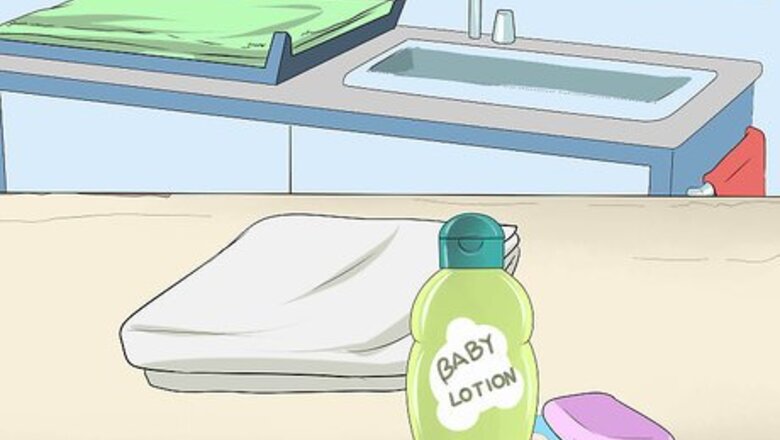
views
Preparing to Clean Your Toddler’s Eyes

Gather what you’ll need. You want to be prepared before you sit your toddler down, since he is unlikely to have much patience for this process. Here's what you'll need: At least one soft washcloth (preferably two) Warm water. It's best to do this near a sink, so you can rinse the cloth if needed No-tears soap or shampoo If your child has an eye infection, you’ll need disposable tissues, rather than washcloths
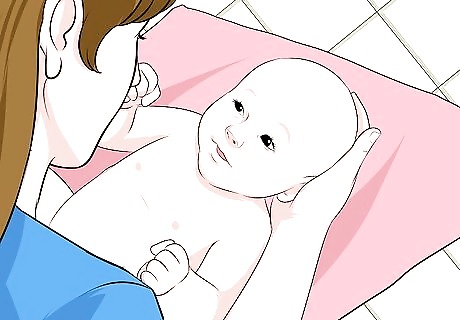
Create a relaxing environment. Ask your child to keep still while you clean her eyes. To help her, try to limit distractions. It can also be uncomfortable for a toddler to have her eyes cleaned, so try to make the space a little cozy. If you’re planning to do this in the kitchen or bathroom, put down a soft towel for her to sit or lie down on. Make sure there is enough light for you to see, but not so much that it feels blinding to your child. Make sure the space is quiet, or put on some music that your toddler finds relaxing. Put away tablets, phones, or any other technology that might cause your child to get antsy.
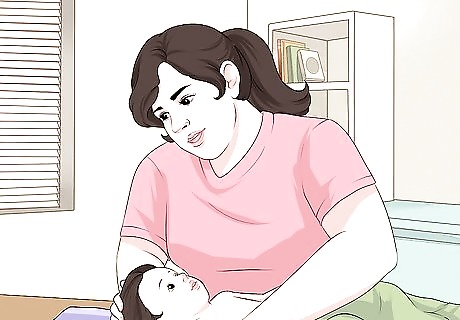
Tell your toddler what you’re going to do. Toddlers are used to being picked up, dressed, and bathed, but having you rub their eyes can seem scary if they’ve never experienced it before. Speak in a soft, calming tone to help him relax. Reassure him that you’ll be very gentle, and the process will be short and won’t hurt at all. Let him know that this is an important part of staying healthy, like brushing his teeth or washing his hands. If you plan to reward him afterward with a treat or a fun activity, let him know. This may help him endure the process if he finds it unpleasant.
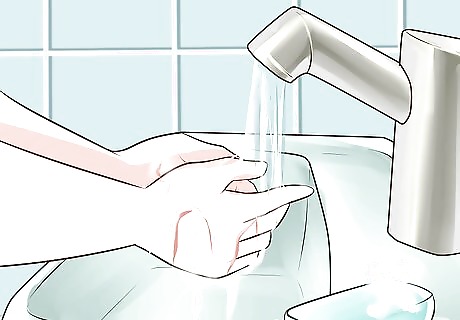
Wash your hands. If your hands are dirty, you could be doing more harm than good. You could accidentally be spreading bacteria or dirt to your child's eyes. To avoid this, use proper hand washing procedure. Wet your hands with clean, running water, then turn off the tap. Apply soap to your hands and rub them together to create a lather. Be sure to lather the back of hands, as well as underneath your fingernails and between your fingers. Rub your hands together for at least 20 seconds. You can sing the song "Happy Birthday" twice to time yourself. Rinse your hands again under clean water to remove the soap. Dry your hands on a clean towel.
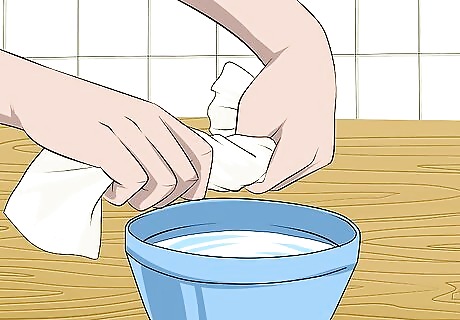
Wet one of the washcloths or tissues with the warm water. Wring it out to remove excess water. The washcloth should be clean and soft. A toddler's face is very sensitive, so even a cloth that you think is soft can feel abrasive to her. If your toddler is nervous, you can rub the washcloth on her cheek or the back of her hand to let her feel how soft it is. Toddlers can be sensitive to temperature, so you can also let her feel the temperature of the water before putting it on her face. Ask your child if the temperature feels okay to her. Make sure the washcloth is not too wet. You don't want to drip water all over her face.
Cleaning the Eyes
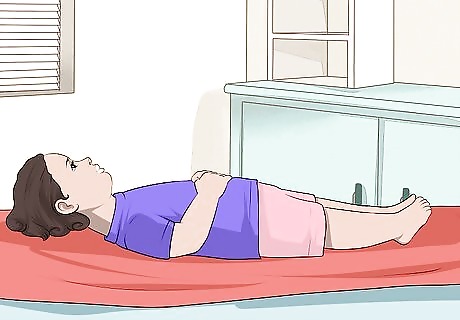
Have your child sit or lie down. Lying down is ideal, because he's less likely to move his head around too much. However, any position in which he's willing to stay still will work.
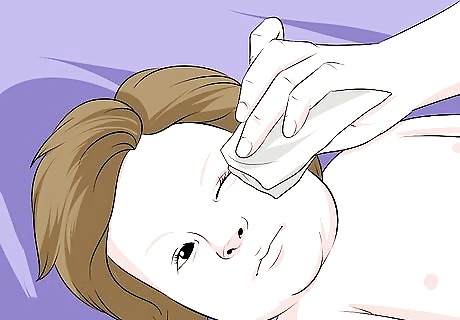
Gently wipe the skin around the child’s eyes with the damp washcloth. You can wipe from the nose outward, or from the outside toward the nose. Wiping from the nose outward can make it easier to keep contact with the skin if the child turns her head away, but either direction is perfectly safe.
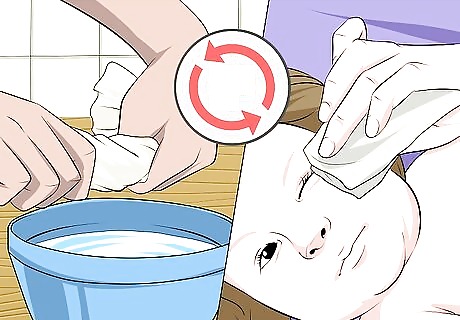
Repeat this for both eyes. Even if one eye appears clean, it’s good to clean both eyes. If your child has an eye infection, be sure to always use a new tissue for each eye. This prevents spreading the infection from one eye to the other. Dispose of tissues immediately afterward. If using a washcloth, rinse the washcloth with fresh water after wiping each eye.
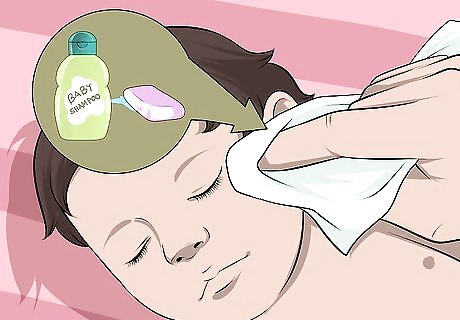
Apply soap to the washcloth if the child’s eyes are still not clean. Toddlers' skin is very sensitive, so use a very small amount of soap and dilute it with water before applying it to the child's face. Use only gentle, no-tears soap or shampoo. Make sure the child closes his eyes, so that the soap does not get inside his eyelids. This can irritate the eyes. Wipe the eyes in one direction, rather than in a circle or back and forth. This prevents soap from getting in his eyes.
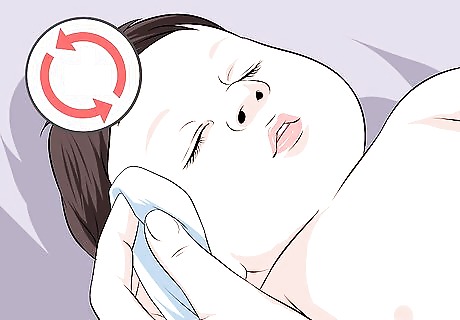
Be gentle and repeat the process until the eyes are clean. Your child may lose her patience and get antsy. Let her know that the more still they can stay, the faster the process will be. Maintain a gentle approach, even if the cleaning becomes difficult.
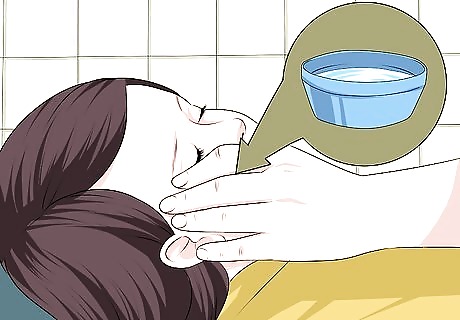
Wipe the eyes one final time with water only. This will remove any remaining soap or shampoo. If you haven't used soap, simply make sure your toddler's eyes now look clean and clear. If you have a second, dry washcloth, wet part of it with warm water. Wipe the child's eyes with this cloth to help remove any remaining soap. Use the dry part of this washcloth to wipe his eyes dry once the soap is removed.
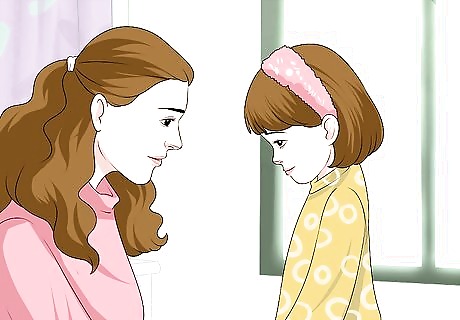
Thank your child. Make sure she knows that you appreciate her cooperation. You may want to reward her with a fun activity, or a special treat. You can ask your toddler how the process went for her. If she complains that the washcloth was to rough, consider finding a softer one for next time. If the water was too cold, tell her you'll try warmer water in the future. Whether you're promising rewards, or a change in the process, be sure to follow through on any promises you make.
Ensuring Your Child’s Eyes are Healthy
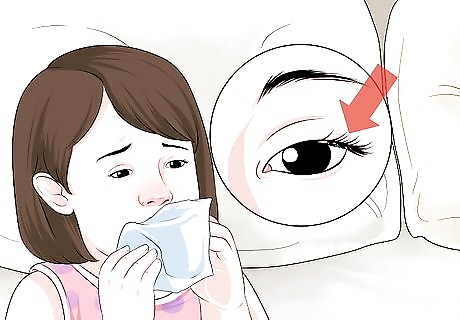
Understand how much discharge is normal. Sometimes toddlers get a little crust around their eyes, or their eyes water a bit and it's perfectly normal. However, if your child is uncomfortable from discharge coming from his eyes, he may have an infection or allergies. Some common causes of eye discharge are: Common colds Seasonal allergies Irritants in the air (e.g. perfumes, dust, pet dander, and smoke) Conjunctivitis (commonly known as pink eye) A foreign body such as an eyelash or dirt or sand in the eye
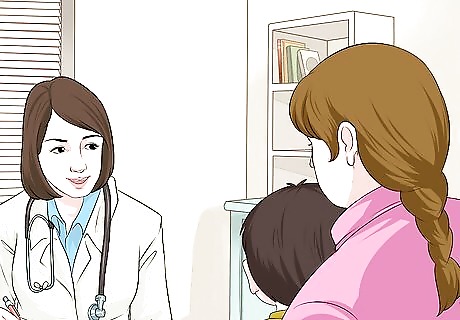
Talk to your pediatrician. Many of the causes of eye discharge don't require prescription medication. However, it’s always best to get a professional diagnosis. Eye infections can be serious and quite contagious, and should be addressed immediately. You should see your child's doctor if there is a lot of drainage or drainage that doesn't go away in a day or two. Also if your child has eye pain, redness, or swelling, or if your child may have gotten something in her eye or has had an injury or scratch to the eye. If your child has a cold or seasonal allergies, over the counter medications may help clear up the eye discharge as they address your child's other symptoms. Only use eye drops or ointments when specifically recommended or prescribed by your child's doctor.
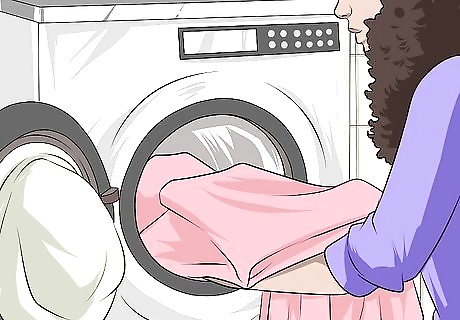
Keep your child from infecting others. Not all causes of eye discharge are contagious. For example, children can't catch seasonal allergies from each other. However, some infections can be highly contagious, and very uncomfortable to toddlers (and their parents). Wash all linens and clothing frequently to prevent the infection from being spread to other children in your home or at school. This can also help eliminate allergens like pollen and dander, which may be a cause of eye discharge. If your toddler does have an eye infection, he may need to stay away from playmates until the infection clears, usually 24 hours after he begins treatment. Your pediatrician can tell you if your child has an infection that is contagious, such as conjunctivitis.
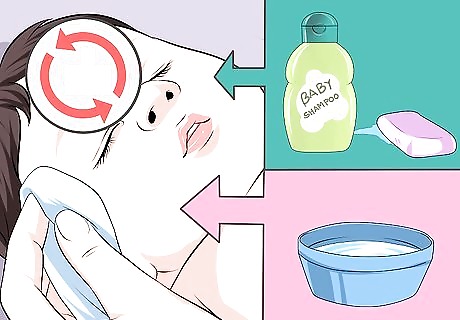
Make eye cleaning part of your regular routine. Get your toddler used to having her eyes cleaned regularly. This can help her avoid the discomfort of watery or crusty eyes, and help keep her healthy. Cleaning your toddler's eyes can be easily integrated into a morning or evening routine such as bath time or tooth brushing. Like mouths and noses, eyes are a great way for bacteria to enter the body, so even a healthy child should have her eyes cleaned daily.













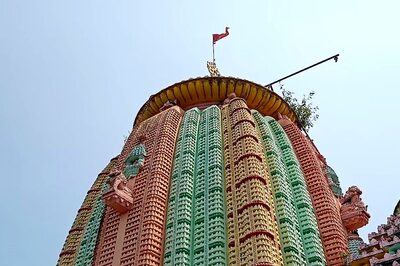
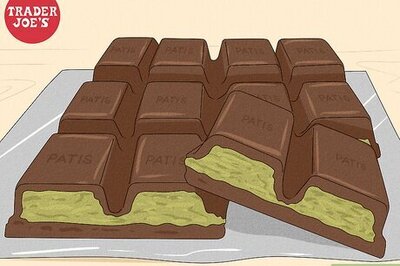




Comments
0 comment